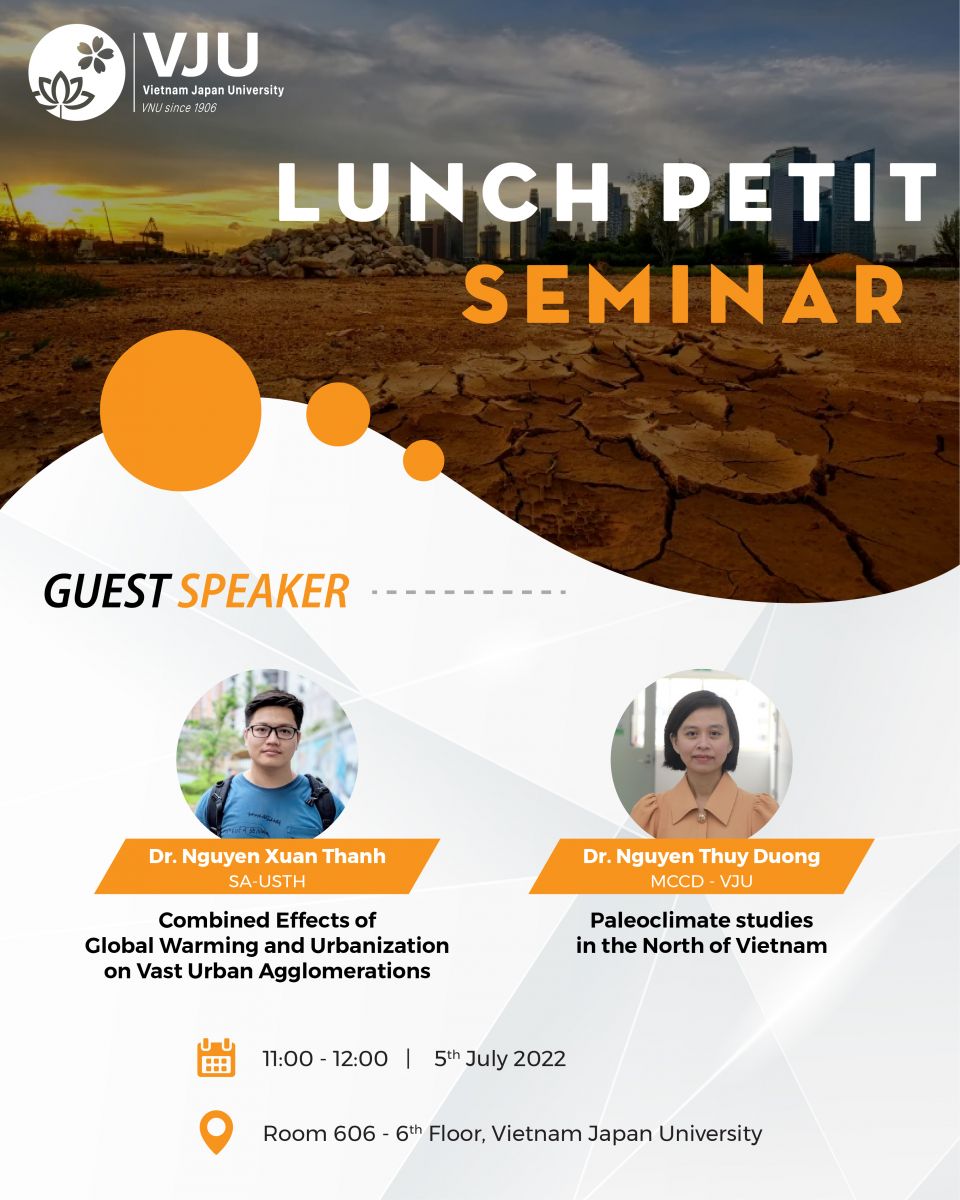
Topic 1 : Paleoclimate studies in the North of Vietnam
Speaker: Dr. Nguyen Thuy Duong | MCCD-VJU
Paleoclimate studies in different time and space scales provide important information on necessary long-term statistic data for testing paleoclimate models. The studies in the Late Pleistocene-Holocene provide a database, which helps to distinguish the impact of natural and anthropogenic factors, as a basis for forecasting climate change. Paleoclimate proxies are commonly preserved in natural archives such as sediment layers, ice, subfossil biological materials, geomorphological features, speleothems, etc. Paleoclimate studies are diverse all over the world but the studies in Vietnam are still limited. This presentation tried to summarize paleoclimate studies in the North of Vietnam, especially for the Late Pleistocene – Holocene periods.
Topic 2: Combined Effects of Global Warming and Urbanization on Vast Urban Agglomerations
Speaker: Dr. Nguyen Xuan Thanh | SA-USTH
Both greenhouse gas (GHG) emissions and urban expansion are regarded as important contributors to accelerating warming trends. Pearl River Delta (PRD) and Yangtze River Delta (YRD) are representative regions with mounting concerns related to anthropogenic warming and the rapid pace of urbanization. Since these places have already experienced thermal discomfort at dangerous levels, it is not farfetched to infer that further warming will increase the heat stress close to the lethal level of human adaptability. However, most climate projections are yet to adequately consider future urban growth and their synergistic effects under global warming, leading to a potential underestimation of the risk of heat-related extremes. This study adopts the latest version of the Regional Climate Model (RegCM) for dynamical downscaling to resolve geographically diverse climate features better and then address the aforementioned limitations. Its performance has been improved by optimizing the configurations over target domains and incorporating a new urban module. First, the double-nested modeling system is developed focusing on the PRD and YRD regions, and its capability to capture region-specific climate characteristics is intensively evaluated in order to assess the effects of convection-permitting and non-hydrostatic dynamical core. Then, the land surface parameterization in RegCM is improved by incorporating a building energy model to prognostically account for the interior building temperatures, thereby enhancing the estimation of released anthropogenic heat fluxes into the urban canopy. Finally, the multiple global climate projections forced by both medium as well as high levels emission scenarios (i.e., RCP4.5 and RCP8.5) are dynamically downscaled using the RegCM double-nested system with the improved urban parameterization by prescribing future urban expansion generated by from different Shared Socio-Economic Pathways (i.e., SSP2 and SSP5). The comparative analysis of downscaled results over the PRD and YRD regions will provide valuable insights into the dominance of varied physical processes acting on the targeted domains as well as the severity of the negative impacts of future warming on human thermal comfort.

